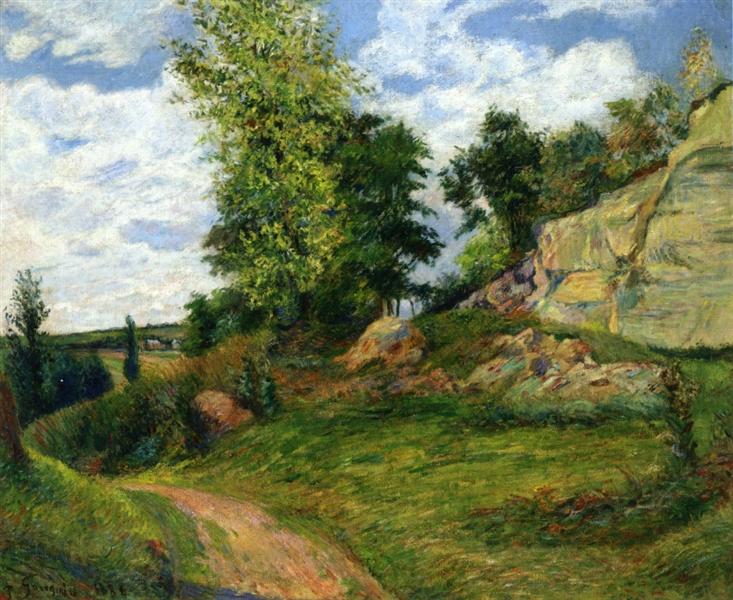Description
Paul Gauguin's "Quarrys at Pontoise" (1882) is a vibrant testament to the intersection of naturalistic depiction and the exploration of light and color that characterizes the works of the Barbizon School and Post-Impressionism. This painting, produced during a period when Gauguin was experimenting with his personal style, reflects his innovative approach to light, form, and the atmosphere of the landscape.
The work presents a landscape of quarries, which although inert and rocky, is depicted with an almost vibrant luminosity. The rocks, sculpted by the action of man and nature, emerge dramatically from the background, forming a composition that invites the viewer to immerse themselves in this transformed geography. The choice of such an austere and raw subject underlines Gauguin's interest in capturing the essence of French rural life and its working environments, contrasting with the idealized romantic landscape.
The palette used by Gauguin in this piece is rich and earthy, with ochres, yellows and deep greens predominating, giving the scene a strange vitality. The way the artist applies the paint, with visible and dynamic strokes, creates a texture that transports the viewer to the very quarries where the light plays between the shadows and reliefs of the rocks. The clear blue sky adds a fresh contrast and allows natural light to flood the canvas, increasing the sense of depth.
In "Quarrys at Pontoise" Gauguin also demonstrates a mastery of color that goes beyond mere optical representation. The areas of flat color that make up the landscape seem to dialogue with each other, suggesting a harmony that transcends physical space. This can be considered a prelude to his later, more symbolic works in which fire, life and spirituality are mixed in more complex ways.
Although there are no visible human figures in this piece, Gauguin's intention seems to be to evoke the presence of work and everyday life that happens in and around these quarries. This focus on the landscape stripped of figures invites us to reflect on the environment and the impact of human activity on nature, a theme that will be recurrent in his career, especially towards the end of his life, when he moved to Polynesia.
Paul Gauguin, known for his contributions to the Post-Impressionist and Symbolist movements, continues to fascinate with his ability to capture not only the visible, but also what lies beneath the surface of perception. The Quarries of Pontoise stands as a significant example of his artistic evolution at a time when he sought to distance himself from academic conventions and embrace a more personal and emotional aesthetic, aligning himself with a group of artists who, like him, were seeking new avenues of expression.
In conclusion, "Quarries of Pontoise" is more than a depiction of a landscape; it is a study of light, colour and the relationship between man and his environment. In this work, Gauguin achieves a synthesis of technique and emotion, inviting the viewer to contemplate not only the beauty of the place, but its deep and resonant meaning, a reflection that resonates in the present and future of art.
KUADROS ©, a famous painting on your wall.
Hand-made oil painting reproductions, with the quality of professional artists and the distinctive seal of KUADROS ©.
Painting reproduction service with satisfaction guarantee. If you are not completely satisfied with the replica of your painting, we will refund 100% of your money.

